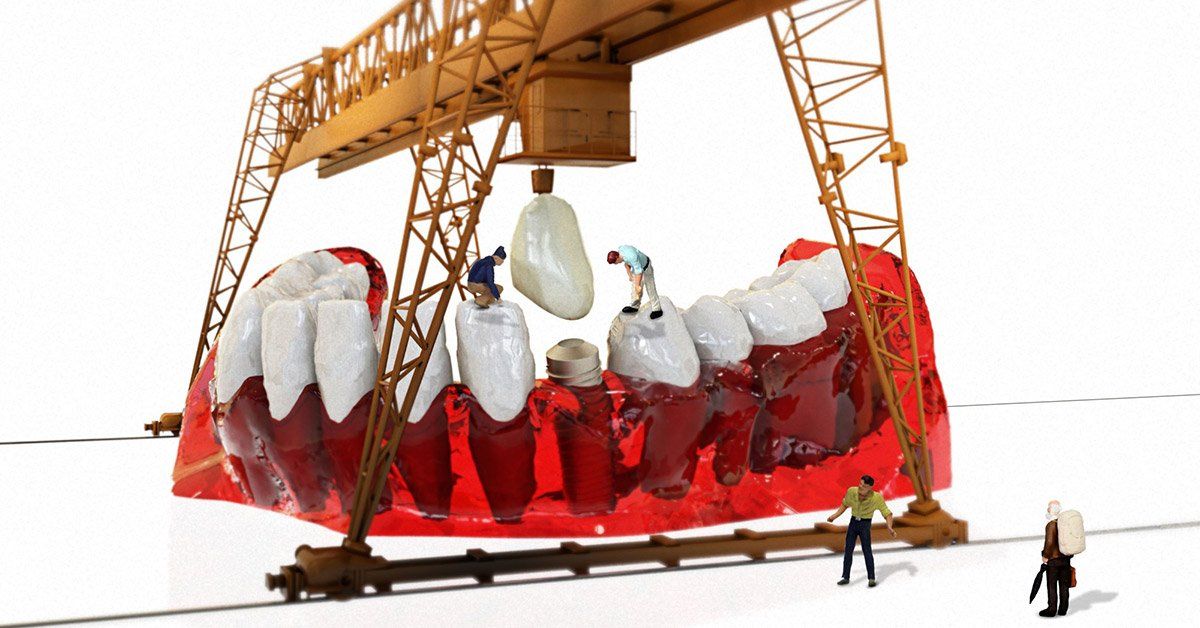What You Should Know If Dental Implants Start Causing Problems
If you have dental implants, in rare cases they may cause you problems. Read on to learn all you need to know about dental implant issues.
It seems like you hear more warnings than recommendations about new technology. That's more about how information sticks than the likelihood of a problem. Years of research go into developing new dental treatments and technology.
No matter how good a treatment is, it will always run into the complication that people are complicated. So it goes with dental implants. While the vast majority of patients see no issues with an implant, a small number encounter dental implant problems.
It's important to understand what causes these problems, how to treat them, and how to avoid them. Your oral health team works tirelessly to ensure that the procedure goes well at the start and to monitor you for warning signs during after-treatment.
The professionals at Soho Dental Group lead industry standards to ensure implant problems don't arise.
Overview of Dental Implants
Dental implants come in different materials but follow the same basic processes for being placed. A metal rod (titanium commonly) is fixed into the jawbone. This heals to set solidly and then an artificial tooth is placed on top of the post.
This is known as an endosteal implant and is the most common technique used to replace individual teeth.
Subperiosteal implants are slightly different. These are set below the gum but not fully in the jawbone, the posts protrude over the gum line, and teeth are attached on top.
Dental Implant Benefits
Either technique adds a strong, natural-looking tooth to restore mouth stability and bite shape. Implants last a long time and often only need the post replaced.
It's much easier to operate with a full set of chompers socially. From a health perspective, filling gaps also reduces wear and tear on adjoining teeth and slows decay.
Dental Implant Problems
The vast majority of patients experience no problems with their dental implants. The few issues that occur mostly happen early on and your dentist quickly addresses them.
The following details the known problems and how they're addressed.
Underlying Conditions
The most common problems come from pre-existing conditions in patients. Certain health conditions such as cancer and diabetes slow natural healing processes and thereby present complications.
For an implant to maintain a strong hold, it needs to be integrated into the bone. The longer it takes to heal, the more chances there are for the implant to slip, even minutely, and result in problems. A speedy recovery is a key part of the implant process.
Gum Disease
Gum disease creates a lot of problems for implant procedures. First, gum disease reduces healing factors. Second, gum disease is an active infection, drilling and cutting into that will only spread it.
Smoking
Smoking reduces blood flow through the gums and interferes with the healing process. The sucking motion also draws infection into the implant site in addition to increasing the likelihood of micromovements.
Bone Density
Bone density is incredibly important when setting an implant. Bone that is too strong as a result of certain cancers will wear down even titanium. Overly low bone density provides an opportunity for cracks and unseating.
For those with osteoporosis, common bisphosphonate medication has been studied and shown to create issues.
These drugs inhibit bone growth by restricting osteoblast formation. Dentists have workarounds and alternative medications can also be sought.
Before an implant procedure, an oral surgeon evaluates bone density. If necessary, jawbone implants and lacing are used to reinforce the area.
Infection
Medical professionals monitor for infections in everything that they do. Infection is the leading cause of complications across the medical world and must be handled swiftly.
In the case of dental procedures, infections gain more opportunities to take root. They may appear as a result of the initial implant surgery, during the healing process, or when the post is attached.
Surgical Issues
The initial implant is put in during a surgical procedure. While a dentist works in sterile conditions to prevent infection anyway, the extra invasive nature of an oral surgery calls for even stronger safeguards.
Additional certifications are required for oral surgeons and they work to prevent issues in the instruments, the implant, and procedure.
Care Issues
Following dietary restrictions, especially those calling for liquid diets reduces possibilities of shifting. A shifting implant creates a hole into the jawbone and the many physiological systems contained therein.
Some foods are more likely to carry harmful bacteria than others. Some foods also linger and are harder to clean away from a healing implant site.
Finally, some foods reduce healing or cause damage (spicy foods in particular). These carry the twin risks of infection and longer recovery time.
Warning Signs
Infections after an implant impact different areas. You may experience infection in the jaw, the gum, or the tongue.
Stay aware of the warning signs and alert your dentist if you experience any of the following.
- Swelling in gums
- Pus in or near the implant
- Fever and pain
- Pain or strain in chewing
- A persistent bad taste
The sooner any of these issues are addressed, the better.
Implant Movement
Any movement in the implant presents a problem. First, movement causes damage, leading to more time to fully recover.
Second, movement opens up holes for infections to begin.
Finally, micromovements realign the post making it more difficult to attach securely. If an implant moves too much, it also realigns the bite strain. This will cause far more ear and tear on the jaw and likely lead to the implant unseating altogether.
Preventing micromovement is another reason to follow dietary recommendations. An implant that gets jostled can grow into the soft-tissue. Soft-tissue radiates pain and provides no purchase for the weight of a tooth.
Brushing Technique
Improper brushing technique and overly vigorous or firm utensils increase the risk of movement.
Be careful when brushing and especially flossing to not dislodge or great gross movement.
Feel Your Best
Even though there are a few known problems with dental implants, their benefits outweigh the risks. Missing and broken teeth create the same opportunities for infections, reduction of bone density, and pain.
Sign up for a virtual consultation here and see what Soho Dental Group can do for you. We serve the greater New York area and are proud members of the medical community.


